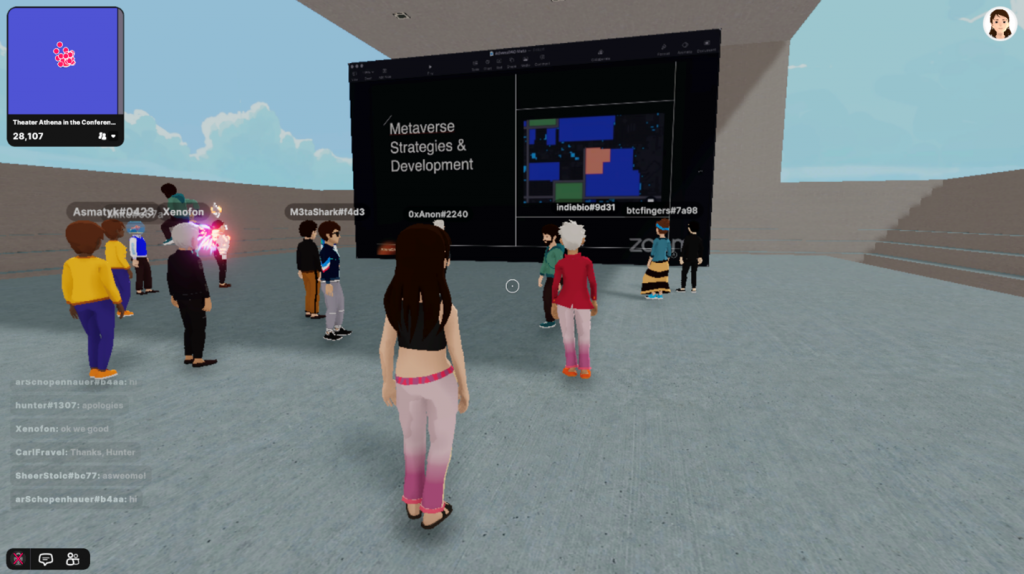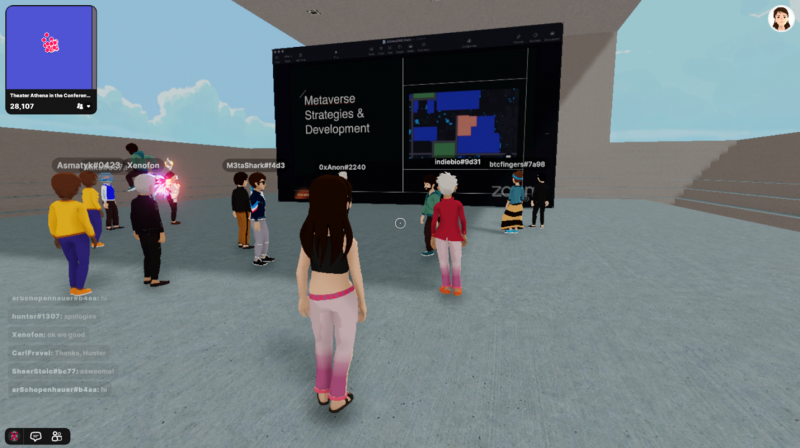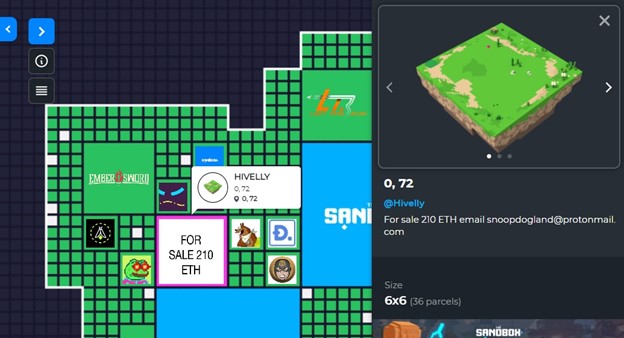
- ARAB NEWS
- 25 Apr 2024

Nader Sammouri
OSAKA: Born from faith in a VR future, a metaverse is an intersection of social presence and virtual reality. It is a network of 3D virtual worlds that cultivates social relationships by forming communities. Similar to the real world, it is defined by architecture on landscapes and the social interactions that happen in between. As people gain interest in digital ownership, metaverse-based real estate becomes a valued asset.
“Virtual real estate is a property in virtual dimensions, also known as the Metaverse. Just like how we can own a piece of land in the real world to develop our projects, whether it may be personal or work-related, we can do that now in the virtual dimension thanks to the metaverse,” said Fatemeh Monfared, a Metaverse Architect and NFT artist.

The Metaverse is glued by a virtual economy that results from people engaging in virtual deals with each other for “real” economic benefit. Buying real estate, for instance, may be done by paying real money on virtual currency to purchase digital or virtual land in what is called “open centralized marketplaces.” These virtual lands with their developments can be sold and leased for virtual currency that can be cashed out anytime.
“Each metaverse comes with its own map and structure of lands, estates, and sometimes even worlds. As an architect in the metaverse, I’ve had experiences developing and designing buildings on those lands, much like in the real world, ranging from the headquarters of a company, an art gallery, and a concert hall. The boundaries or limits of what can be done in these virtual dimensions and the types of virtual real estate are constantly evolving. One interesting aspect of this can be found in mixed realities. In some metaverses, you can even purchase virtual ownership to parts that exist in the real world,” Monfared said.

Unlike games like SimCity, platforms such as Decentraland, The Sandbox, and Roblox are no longer referred to as games, but are called platforms because real stakes are being held. Some lands are being purchased for hundreds of thousands of dollars, and the trend is generating further innovation. 1BLOCK, for instance, is a Japanese virtual platform that promotes an exclusive shopping experience as a virtual fashion marketplace. Browsing a shop on virtual floors, one may be able to buy any type of fashion item, like a sneaker, and even try it on virtually.
People may find it hard to grasp the value in virtual real estate and may be curious, why would anyone be interested in vague land?
“I’ve seen a lot of skepticism concerning virtual real estate, the metaverse, and NFTs. I believe it’s coming mostly from fear of the unknown and the lack of education on these topics. The best way to overcome this, in my experience, is by focusing on the possibilities that technology can offer. The world, in general, is taking a shift towards the virtual, and this process was definitely accelerated by the pandemic. In my opinion, this shift is inevitable and it will become our reality whether we like it or not. Therefore, I think it’s vital that we get involved in the process of its creation, shaping it to its best form,” Monfared said.
The technology is too novel. What if the value of virtual land collapses? And with many platforms competing, how can one invest their money in one, not knowing which platform will eventually win?
“The value of virtual land will fluctuate as anything else on the market. However, going back to zero is quite impossible in my opinion. I believe that once the wheel is set into motion, it’s never going back. There are many platforms and metaverses entering the industry right now, and I do believe that some will have higher success than others. Nevertheless, the future is interoperability! This means that instead of having one platform as the winner and all the rest dissipating, we will have a system where we can connect all of them into one open metaverse, where we can move through portals from one metaverse to another. Ideally, we can also move our assets across these platforms,” Monfared said.
So how can one approach buying virtual real estate, and how can they bring friends or customers in?
“Before buying land in the metaverse, I think it’s important to have a clear strategy on what you want to achieve in your virtual presence. The metaverse has already attracted a huge audience, with platforms such as Roblox receiving 47 million daily active users globally. The challenge here is to create a strategy to attract those users to your project. I am excited for the future of work and exploring how each industry can fit in or find its place in the metaverse,” Monfared said.
Digitization is here to stay, in virtual land. Experts may indeed be predicting a more digitized future. Nonetheless, will this outrageous VR bubble endure time, and if so, what are the unanticipated consequences that may come as a result of all these changes, and how will buying virtual land impact architecture when it is no longer held by physical matter but by invisible code?